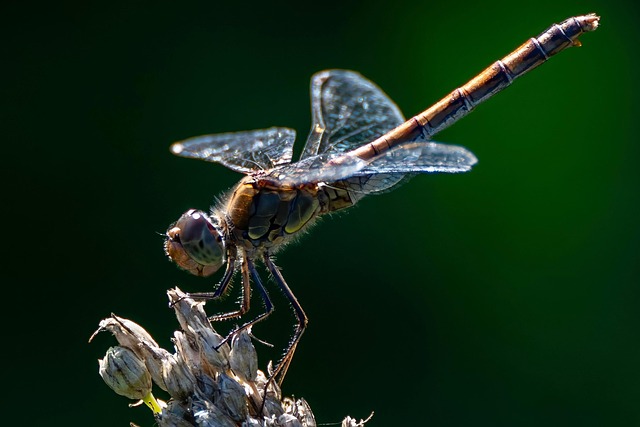Cricket infestations can be managed by understanding their nocturnal behavior, attractants (like greenery and bright lights), and implementing targeted strategies. Creating a cricket-unfriendly environment through cleanliness, natural repellents, proper drainage, and ventilation is proactive. Control options include insecticides, baits, and professional services. Long-term prevention involves regular inspections, maintaining a clean space, using natural deterrents, introducing beneficial insects, and practicing good sanitation. Combining these methods effectively treats current infestations and prevents future ones.
Cricket infestations can quickly transform peaceful outdoor spaces into bustling arenas, causing frustration among homeowners. Understanding how these insects are attracted to your area is the first step towards effective control. This article provides expert advice on addressing cricket attractants and offers comprehensive solutions for treatment and long-term management. Learn how to create a cricket-unfriendly environment, explore prevention strategies, and discover sustainable methods to keep your space cricket-free.
Understanding Cricket Infestations: Common Attractants and Behaviors
Cricket infestations can be a nuisance, but understanding their behavior and attractants is the first step in effective cricket infestation treatment. These insects are drawn to areas with abundant food sources, suitable habitats, and minimal predators. Common attractants include lush greenery, dense vegetation, and spaces offering protection from extreme weather conditions. They tend to favor warm environments, especially during the summer months, making outdoor spaces like gardens and parks prime real estate for cricket gatherings.
Crickets exhibit nocturnal behavior, becoming active after dusk when they start searching for food and mates. They are attracted to bright lights, which can trap them, leading to increased populations near outdoor lighting fixtures. Additionally, cracks, crevices, and narrow spaces provide ideal hiding spots, encouraging crickets to congregate in these areas. Recognizing these attractants is crucial for implementing effective cricket infestation treatment strategies aimed at deterring and controlling their presence.
Prevention Strategies: Creating a Cricket-Unfriendly Environment
Creating a cricket-unfriendly environment is a proactive approach to prevent and reduce cricket infestations. Start by maintaining a clean and clutter-free space, as crickets are attracted to hidden corners and debris where they can breed and find shelter. Regularly remove any fallen leaves, branches, or grass from your yard, and ensure proper drainage to eliminate standing water, as these serve as breeding grounds for crickets.
Consider using natural repellents like citronella, peppermint oil, or neem oil, which can deter crickets without harmful chemicals. Keep your home well-ventilated and use air conditioning when possible, as crickets are less likely to enter cool, dry spaces. Sealing entry points and cracks in walls, doors, and windows with caulk or weatherstripping will also make your space less appealing to these pests. Regular inspections and prompt cleanup of any food debris or spills can significantly reduce cricket attraction.
Effective Treatment Options for Cricket Control
Cricket infestation control offers various effective treatment options for managing and reducing cricket populations in your space. One of the most common methods involves the use of insecticides, which can be applied as liquid sprays or dusts to target active crickets and their hiding places. These chemicals are designed to disrupt their behavior and reproductive cycles.
Additionally, baits are another popular approach. By placing attractive substances that contain toxic ingredients, crickets are lured in and subsequently eliminated. This method is particularly useful for targeting hidden areas where crickets tend to congregate. Professional pest control services often employ a combination of these treatments, tailored to the specific needs and severity of the cricket infestation, ensuring long-lasting results and a cricket-free environment.
Long-term Management: Sustaining a Cricket-free Space
To achieve and maintain a cricket-free space in the long term, a comprehensive approach to cricket infestation treatment is essential. This involves addressing both current infestations and implementing preventive measures to deter future crickets. Regular inspections are key; identifying potential entry points and sources of food or water will help you seal off areas and reduce attractants. Maintaining a clean and clutter-free environment, particularly in gardens and outdoor spaces, significantly diminishes cricket habitats and food sources.
Moreover, using natural repellents and beneficial insects can be an eco-friendly option for cricket infestation treatment. Certain plants like citronella, lavender, and marigolds are known to repel crickets naturally. Introducing predator insects, such as lacewings or spider mites, specifically targeted at crickets, can also help control populations. Combine these methods with proper sanitation and exclusion techniques, and you’ll create an environment less welcoming to crickets, ensuring a sustainable cricket-free space over time.
Addressing a cricket infestation requires a multi-faceted approach. By understanding the common attractants and behaviors that lead to infestations, you can implement effective prevention strategies and create an environment unappealing to crickets. For existing issues, there are proven treatment options available. Moreover, adopting long-term management practices ensures sustainable cricket control, allowing you to enjoy a cricket-free space for years to come. Remember, proactive measures and consistent effort are key to managing and preventing cricket infestations effectively.
